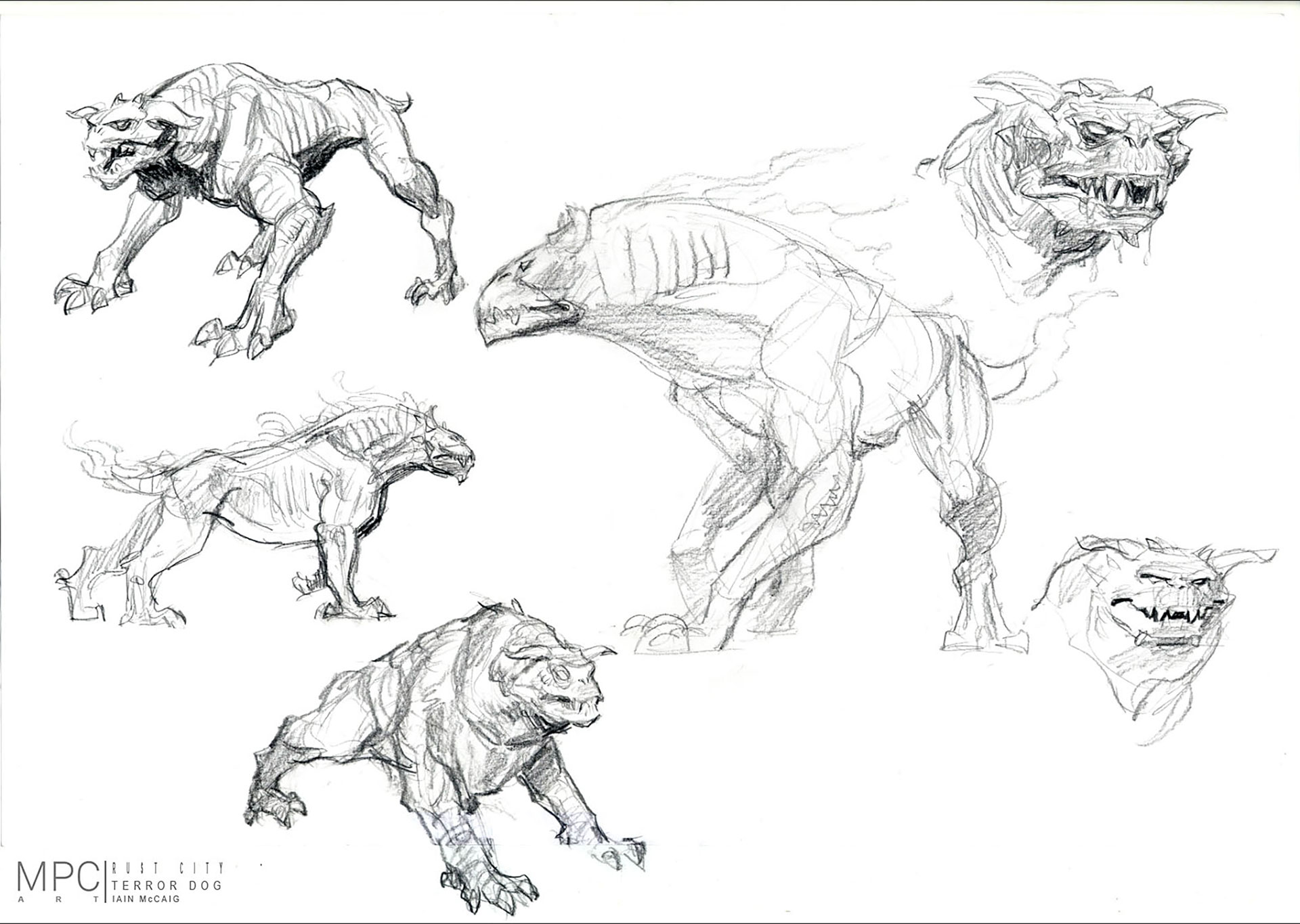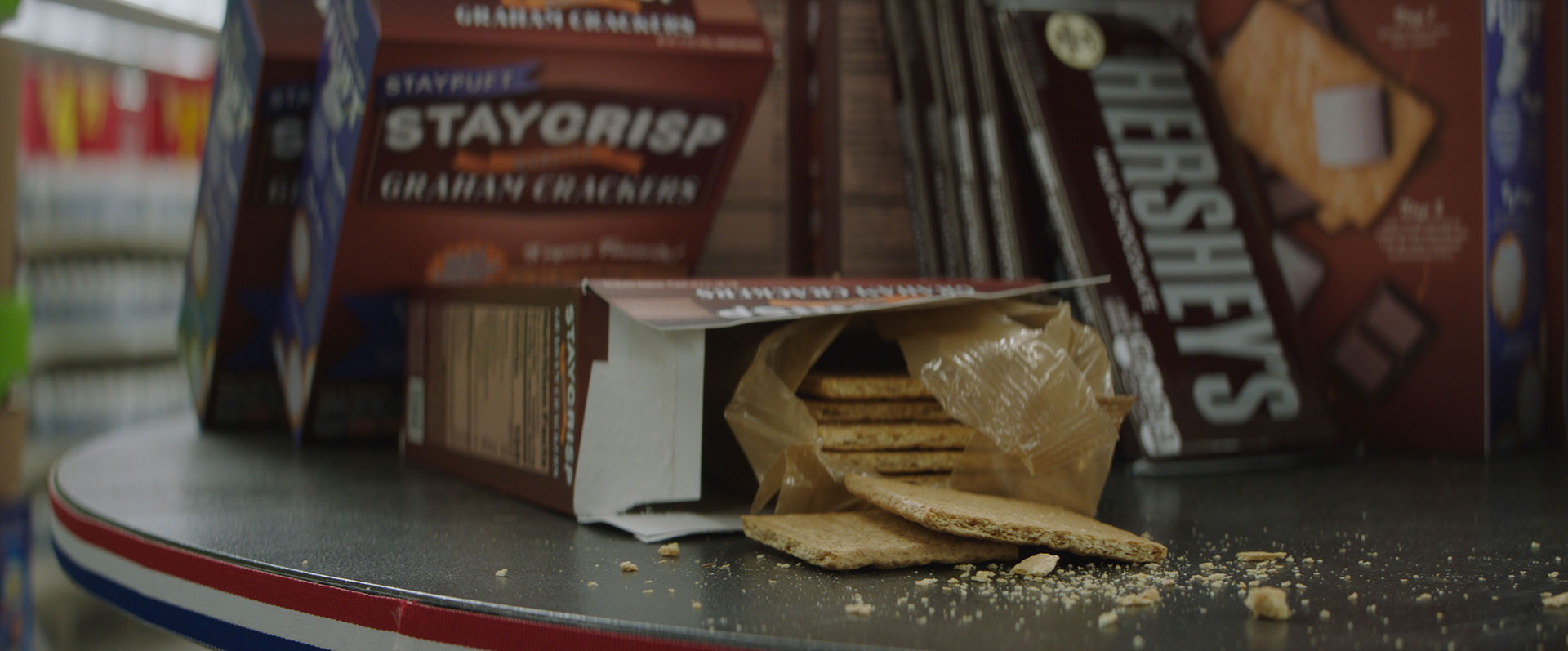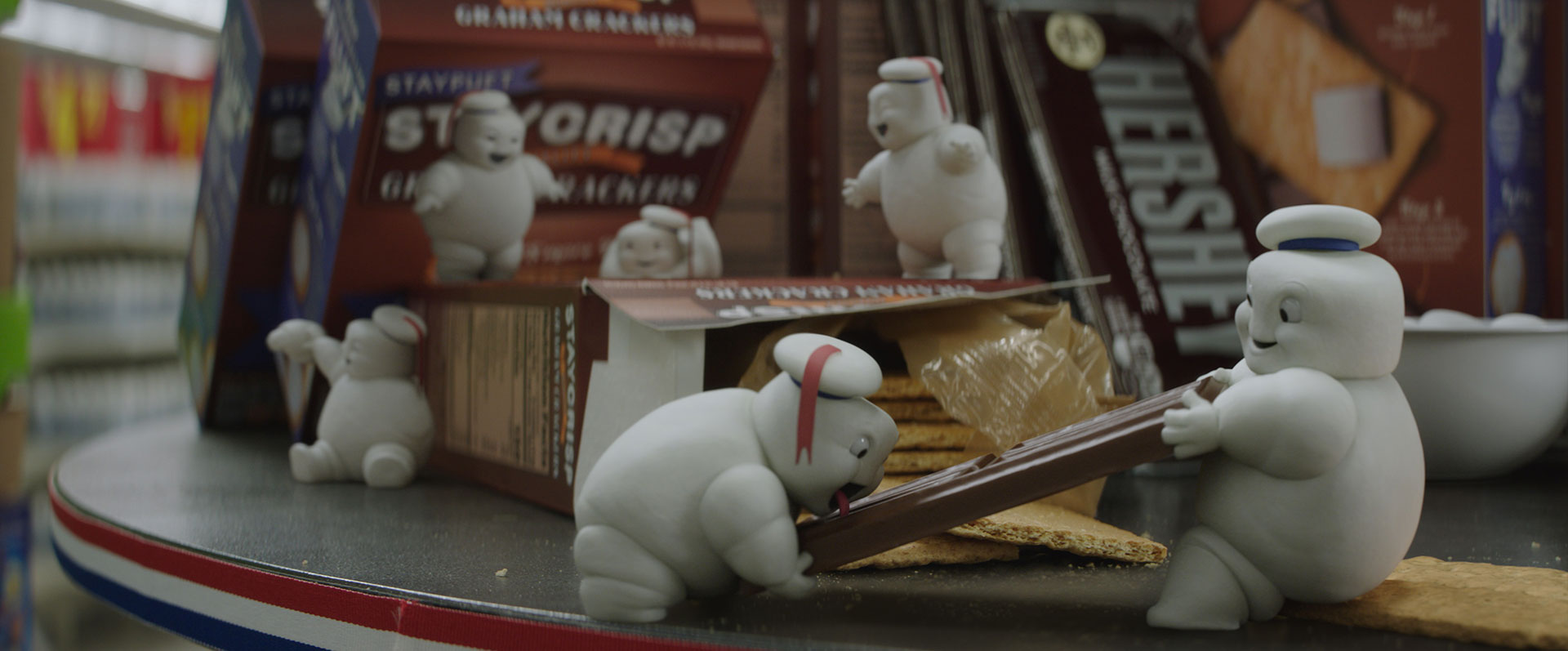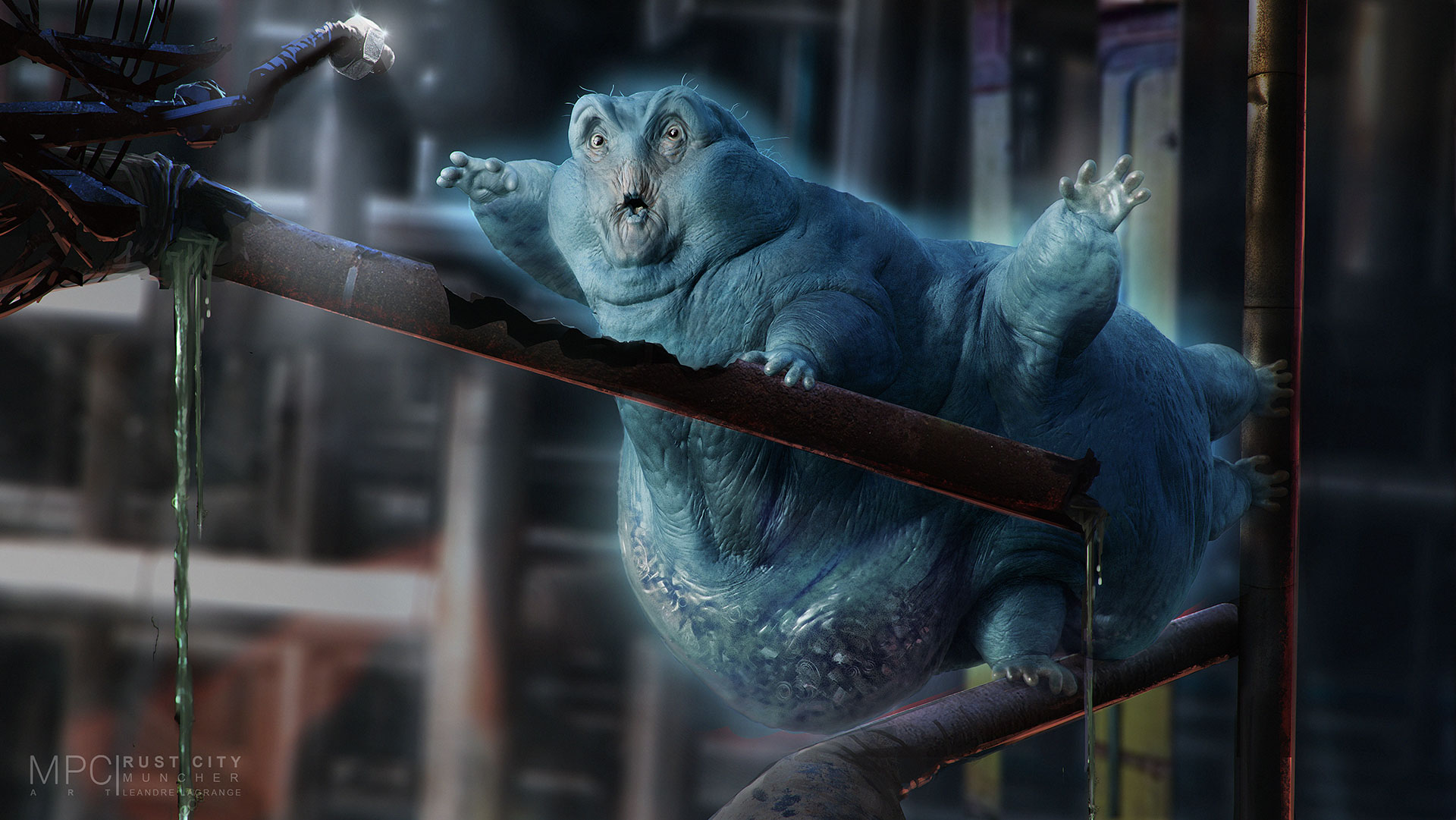Pier Lefebvre has been working in visual effects for 18 years. He joined MPC in 2012. He has worked on a large number of films such as Godzilla, Ghost in the Shell, 1917 and Godzilla vs. Kong.
//// NOTE: This interview has massive spoilers! Be sure to watch the movie first!
How did you and MPC get involved on this show?
There was some early discussion with MPC before I got involved in the project. After a first meeting with Alessandro Ongaro and Kerry Joseph I flew to Calgary to visit them and meet Jason. We discussed the end of the movie and what Jason wanted for the homage to Egon. It clicked from there, and we were in.
What was your feeling to be involved on such an iconic universe?
I’ve been a huge fan of the original movies, and knowing we would have the chance to work on such an iconic franchise was pretty thrilling; especially knowing Jason was going to direct it.
How was the collaboration with Overall VFX Supervisors Sheena Duggal and Alessandro Ongaro?
When I joined the project it was Alessandro supervising the movie, and I truly enjoyed working with him. He gave us a lot of creative freedom and was always on point with his feedback. I hope we can collaborate again in the future.
What were their expectations and approach about the visual effects?
The goal was to make visuals that would honor the original movies with modern tools and artistry. Obviously there were high expectations for the work on Egon‘ ghost. The climax of the movie rested on the execution of our work and I think the team at MPC achieved something that made the audience feel like he was there again.

How did you organize the work with your VFX Producer?
I’d been working with Sarah Moussaif at MPC for a few years now, but it was our first movie as Supervisor and Producer. She took care of a lot of the bidding for me… thanks Sarah!!! Jokes aside, we did pretty much everything together. Client calls, sequence breakdowns, methodology, etc.
How was split the work amongst the various MPC offices?
The assets were done in London by MPC’s Character Lab team with the support of artists in Bangalore too. The animation and CG departments were in Montreal, and we split the compositing work between Montreal and Bangalore.
What are the sequences made by MPC?
Our main work was the big reveal of Egon’s ghost in the final sequence.
We also did some of the Mini Puft shots for the Walmart scenes, which was really fun. The BBQ, the blender and the smores. Lastly, we included a few ghost appearance like Bug eye, the slime river and fire phantasm.
Can you elaborates about the design and the creation of the Mini-Pufts?
DNEG designing the assets, and we were asked to collaborate and pitch ideas to develop their personalities and behavior.
Can you tell us more about their rigging and animations?
Our animation supervisor Christophe Paradis did a terrific job bringing them to life. I don’t remember having that much fun in animation dailies ever! Rigging was pretty straight forward but we had quite a bid of post fixes and simulation for intersection marshmallows and volume preservation. The goal was to get a pleasing shape across a range of movements.
What kind of references did you received for their animations?
There was a fine line between childish behavior and careless rascals. Those mini-pufts were just out there, exploring the world, a bit naive, innocent with a small splash of evil.
How was simulate their tiny presence on set?
We had small puppet and mini chrome/grey balls for reference. The shots were nicely designed from the plate photography. All their actions were designed later by our team in post.


Can you tell us more about your work on the other ghosts?
We had Bug eyes designed by MPC’s Character Lab team in London. The fire phantasm was a half bird half human skeleton with a fire simulation for his trail. The slime river inspired by the second movie was all done in Houdini by our FX artists.
Can you explain in detail about the first apparition of Gozer?
We shared this sequence with DNEG. It was quite tricky to get the body track perfect. Her body also had a pretty complex shading network with lighting bolts and energy going through her. Definitely some of the most complicated work we’ve done in a short space of time.
How did you manage the various FX work?
My CG Supervisor Erik Gonzalez and FX Lead Steffan Lones really helped us a lot of the heavy lifting, The seniority of the team made my job much easier.
Can you elaborates about the creation of the digital double for Harold Ramis?
It was a very delicate mandate to bring back Egon through CGI keyframe animation. The complexity of the challenge was augmented since the ending of the movie was relied on the execution of our work. We first started by making a young version of Egon which was integrated in some archival footage provided by Sony. This would became our reference point before the aging process. One of biggest challenges for Egon was the lack of reference material. We had tons of footage from the original movie but nothing from a captured rig. A lot of the fine details were achieved just by observation and the skill of MPC’s artists. We used different scans from our library, mostly shot in the Clear Angle Dorothy capture rig. Our Character Supervisor Dan Zelcs overlooked the whole process from modeling to final rigging. Animation was all keyframe. The animation team spent weeks studying the archival footage of Harold Ramis and developed almost a third sense for posing the character. Simulation was used for hair and skin sliding and wrinkles. We also spent quite a bit of time perfecting caustic settings for the eyes and the glasses.
How did his ghostly appearance affect your work?
The ghost treatment was one of the last thing we worked on. From day one, we knew that it had to be subtle effect. We first integrated our CGI Egon to the actor’s torso and applied our ghost recipe on top of it. Our DFX supervisor Sebastien Raets oversaw most of the treatment. A mix CG particles and refracted renders were assembled to finish the look.
Which shot or sequence was the most challenging?
The final send-off for Egon was probably what was scrutinized the most. It wasn’t the hardest but it was definitely our most challenging task.

Is there something specific that gives you some really short nights?
Watching and studying the original movies!
What is your favorite shot or sequence?
Having Egon standing next to the original cast was truly a moving experience for me.
What is your best memory on this show?
We did a very important temp delivery for a studio screening and there was a tremendous amount of pressure on getting our CG Egon in a good place to make sure it would deliver for the climax of the movie. The team did an amazing job, delivering a really impressive version of the final sequence and from that moment the filmmakers knew it was going to work!
How long have you worked on this show?
A total of 15 months.
What’s the VFX shots count?
Approximately 47.
What is your next project?
I’m working on a few things but can’t disclose for now.
A big thanks for your time.
WANT TO KNOW MORE?
Alessandro Ongaro: My interview of Overall VFX Supervisor Alessandro Ongaro about Ghostbusters: Afterlife.
MPC: Dedicated page about Ghostbusters: Afterlife on MPC website.
© Vincent Frei – The Art of VFX – 2021






